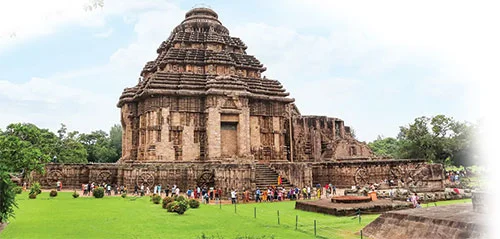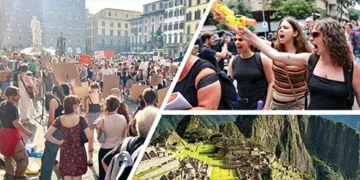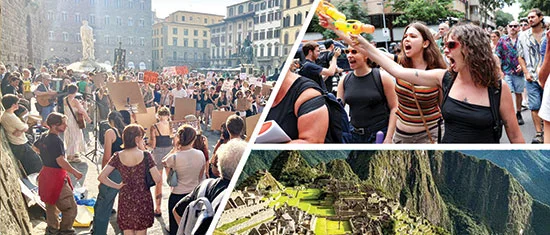Blitz Bureau
NEW DELHI: THE old streets of Venice groan under the weight of their own beauty. gondolas weave through canals packed tighter than a marketplace, temples in Kyoto sigh as silence evaporates beneath camera shutters, and medieval towns across Europe rise in protest, waving signs that beg travellers to pause citing ‘Over Tourism’. The world’s most treasured destinations are gasping for breath, their charm threatened by the very visitors they once courted.
So the question arises, where will the millions of restless dreamers go next? Look East. To a land so vast it feels like an entire world, so layered in history and colour that each journey is a new story, and so deeply hospitable that strangers are welcomed as guests, and guests as family. That land is India, and today, it stands ready to take its place as the world’s next great stage for global tourism.
Undaunted by scale
India has never been daunted by scale. The Kumbh Mela of 2025 proved this beyond doubt, when over 600 million pilgrims streamed into its folds over just a few weeks – the largest gathering in human history. Yet what the world witnessed was not chaos, but harmony: careful organisation, efficiency, and above all, generosity.
If a country can embrace hundreds of millions in a single festival, surely it can welcome those who come seeking beauty, knowledge, and wonder. With growing focus on safety, democratic stability, and expanding infrastructure, India has quietly been preparing itself for the influx of global travellers. To journey through India is to hold time’s hand and let it guide you across centuries and landscapes.

A morning may begin at the Taj Mahal, where marble whispers of undying love, and end amid the golden sands of Rajasthan’s forts that once braced against invading armies.
The evening may carry you to Gujarat’s intricate stepwells, where women once descended in silks to fetch water, and where history now lingers in every carved column.
Beyond monuments
But India is not just its monuments – it is its spirit. In Tamil Nadu, ancient temples pulse with chants said for a thousand years. In Sanchi, Buddhist relics recall the quiet footsteps of monks. In Delhi, majestic Mughal mosques rise skyward, their arches holding centuries of conversations between faiths. Then there are India’s natural theatres: the Himalayas scrape against the heavens, Kerala’s backwaters drift like painted dreams, Kaziranga hums with the tread of rhinos, while the Andamans shimmer with coral gardens. No single nation offers travellers a canvas this wide.
And when you think of the past and nature have told their piece, India’s present overtakes you. Every state is alive with its own flavours, dances, and festivals – Kathakali’s painted eyes follow your gaze in Kerala, while an Assamese kitchen surprises you with rice delicacies you’ve never tasted before. Here, discovery never ends.
For the modern traveller, comfort is as vital as curiosity. Here too, India speaks with confidence. With one of the world’s largest English-speaking populations, communication glides where it once faltered. International flights now land directly in nearly every region. Within the borders, airlines, trains, and roads knit together a transport network as diverse as the land itself. Luxury hotels, boutique stays, and family-run homestays ensure every traveller finds a home.
The message is clear: while others grow wary of visitors, India holds its arms wide. An e-visa process covering over 160 nations bears proof.
Next Golden Age
But India’s gift to the world is not just space – it is vision. The future of tourism here is not to repeat the mistakes of overcrowding, but to write a new chapter in its history.
Eco-resorts, community-led tours, and cultural preservation efforts already shine as examples of sustainable tourism. India knows that the people who live by its rivers, guard its forests, or dance in its festivals, must remain keepers and beneficiaries of its wealth of stories. Tourism here is not to overwhelm – it is to uplift.
By 2030, global arrivals will soar beyond 1.8 billion. Where will they go? To places that can embrace them with dignity. As doors close elsewhere, India’s will remain open. And for the traveller, every sunrise at the Ganges, every Kathakali performance by the sea, and every ruin in Hampi will testify to a truth rarely found in travel: here you do not just see sights, you see soul.
The next golden age of tourism is no longer a forecast. It is standing before us, radiant and beckoning. And at its heart is India – timeless, limitless, and ready.
































